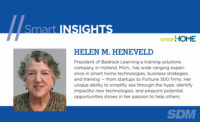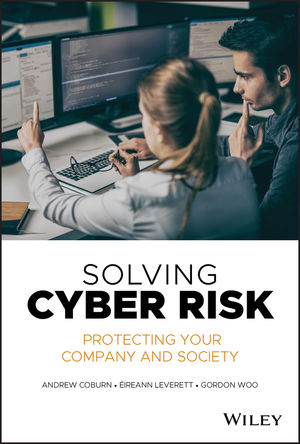So, where does a manager begin? The first step typically requires the identification and agreement on sustainability goals, followed by making sure that the sustainability project under consideration delivers short- and long-term energy efficiencies that move the facility closer to established objectives.
3 Core Elements of Future Proofing
Future proofing is about synthesizing considerations including energy efficiency, finances and system capabilities into a complete analysis of a project. It involves balancing near-term functionality and financial considerations, while providing longer-term opportunities for new energy-efficient systems to grow and develop with the facility’s needs. There are three core elements: energy reduction, business analysis and future integration opportunities.
The first requirement in future proofing is to slash energy use to insulate the operation from kWh increases. This critical step involves a prioritized list of energy reduction strategies with an analysis of project cost, anticipated kWh reduction, utility incentives and project lifespan. Every facility manager and executive has a version of this hit list. Just make sure it’s up to date and prioritized.
The second requirement is the business analysis. To be successful, projects must have a solid return on investment (ROI) in a reasonable timeframe and a compelling total cost of ownership (TCO). Most facility managers only evaluate the ROI of a project - upfront costs divided by the annual energy savings - with an eye to when the anticipated savings cover the initial purchase price (time horizon). But the ROI analysis only tells a part of the story. TCO analysis tells the whole story, including all the variables, across the useful lifetime of a project and should be the primary way projects are evaluated prior to deployment. Some proposed projects might have lower upfront costs, which make them seem appealing. However, the energy savings are lower over time, which actually increases the TCO. Other projects have higher upfront costs but much lower annual energy use, so the energy savings accumulate over the life of the system to make the TCO much lower.
The third requirement in future proofing is more complex. It involves anticipating the future state of the facility and characteristics of the operations, and making sure that the energy-efficient systems support the longer-term vision. Should the RFID system communicate with the lighting system, perhaps activating lighting in certain areas based on the inventory being delivered or picked? Should the chiller or other system be able to communicate with the utility? Should any or all of those systems provide meaningful data and reports? Having an idea - even a very general one - of how systems should integrate or communicate in the future will help inform today’s decisions.
Choosing Smart Systems
Future proofing a facility involves choosing systems that have built-in intelligence and that are designed to integrate with other systems to capture meaningful information and exchange key data. This doesn’t mean an unnecessarily complex approach.
The first criterion in choosing a smart solution is a system that provides the ability to gather key performance data that facility managers and engineers can use to improve operations. The old adage is still true: You cannot manage what you cannot measure. Without data to show the performance of a system - heating, cooling, lighting and others - it is virtually impossible to meet efficiency goals, substantiate efficiency improvement claims or control operational costs. A recent report from the Pew Center on Global Climate Change, “From Shop Floor to Top Floor: Best Business Practices for Energy Efficiency” points to primary motivators for initiating new programs, which include setting goals and harvesting, measuring and communicating data. This is only possible if there is accessible data in the first place. Data is also what makes it possible to fine tune or re-commission a system to ensure that it is supporting business needs.
The second criterion is the ability to exchange data with other systems, a process which is enabled by open APIs - the standard data transfer mechanism. If the chiller and the building management system don’t speak the same language, how can they generate a single integrated report? What about lighting? Can the lighting talk to the other systems? Without the ability to exchange information, each system is a silo and the only way to gather and analyze available data is manually. That closed approach will not future proof your facility or minimize your TCO.
So, why deploy smart technologies in a facility? Benefits include:
- Enabling facility managers to establish best practices based on real data;
- Creating a clear picture of what is occurring in the facility - how energy is being used, employee traffic patterns, occupancy rates, etc.;
- Driving better decisions by providing management with data on energy improvements to balance employee workforce requirements with sustainability objectives;
- Bringing the employees into the process and creating ownership across the facility. (The same report from the Pew Center for Climate Change highlighted one of the seven habits of highly efficient organizations, which is to appoint full-time staff who are responsible for energy performance and the communication of success across the organization.);
- Measuring key indicators, such as identifying the times of day it is cheaper to cool a cold storage facility to leverage arbitrage pricing discounts;
- Facilitating remote access to controls should an error or situation arise during off hours;
- Providing information to better link the individual and the system, such as a lighting system that would be able to guide an employee in a 300,000-square-foot warehouse to the products required; and
- Aggregating data from multiple industrial facilities into an integrated report to make assessments of how the company is progressing in its goals.
Future Proofing in Action: Smart Lighting
Lighting is known to be one of the largest users of energy, consuming 30 percent of the nation’s supply. As a result, it is at or near the top of most energy-efficiency project lists. Lighting is also undergoing a major transformation, including the use of more effective illumination sources (LEDs) that deliver greater light output with dramatically less energy. There is also considerable innovation and movement in smart, systems-oriented lighting - a natural evolution of the older approach of standalone lights and aftermarket switching or controls systems.
For new construction of office or other commercial spaces, there are Ethernet-based lighting networks that build data collection and management right into the new systems and reduce energy use. In warehouses and industrial facilities, which typically retrofit aging HID fixtures, intelligent lighting systems are enabling energy efficiencies while future proofing these very large spaces. They deliver light when it is needed (turning the lights on when an employee enters the area and turning them off when not needed) and reduce energy consumption by up to 90 percent over traditional HID fixtures. The systems also gather useful data about kWh consumption and zone occupancy, which can be used to fine-tune the lighting program. Should the lights stay on 60 seconds when an aisle is vacated? Maybe not. Reviewing the energy and occupancy data can tell you whether a 30-second setting will provide sufficient light and reduce energy use.
The Bottom Line
Improving energy efficiency and integrating smart technologies can seem daunting, but reducing exposure to energy rates and creating a platform for operational intelligence is a worthwhile investment. Resist the temptation to address an immediate need with a project that doesn’t have a beneficial TCO, or with a “closed” system. It may seem like a short-term win, but the lasting implications will hinder the organization’s ability to implement the longer-term vision. While many systems are not yet fully intelligent, as long as they currently have the ability to gather data and have a roadmap for future integration opportunities, they will be a strong first step on a clearly marked path toward meeting the facility’s sustainability goals.
Smart Solutions Checklist
To ensure that the solutions under consideration are based on smart technologies and will provide a strong, future-oriented foundation, consider:
- How are cost and energy savings measured?
- Will the solution provide measurable data?
- How is the total cost of ownership (TCO) measured for a system?
- How long is the payback period?
- Is the data available in a format that can be analyzed to manage and control the facility more efficiently?
- Is it possible to estimate the impact of systems under consideration before selection and implementation?
- Is the system customizable?
- Was the system developed with open APIs so it can - now or at a later point in time - be integrated with internal or external systems, e.g., management control systems, external utilities and/or Smart Grids?
- Is the system - chiller, HVAC, lighting - optimized around performance tracking and reporting of key performance indicators?






